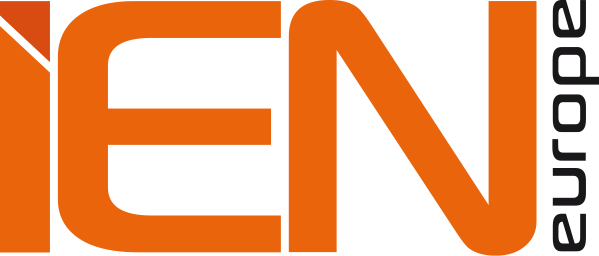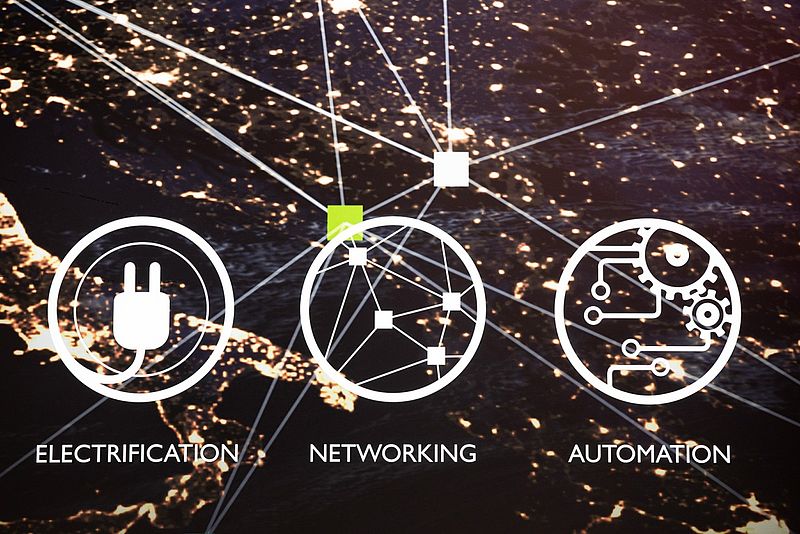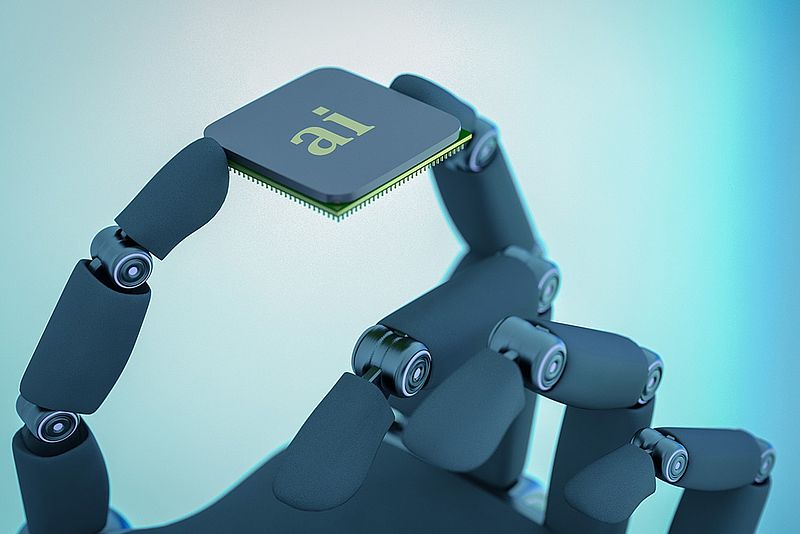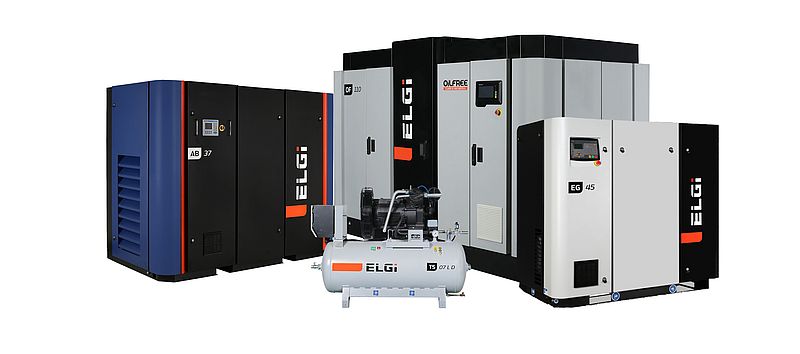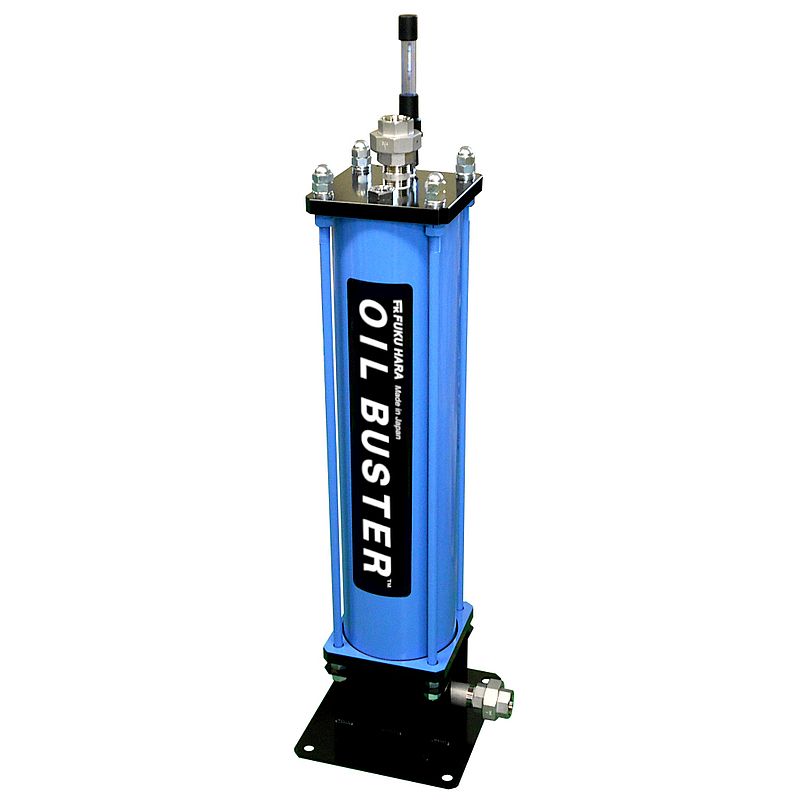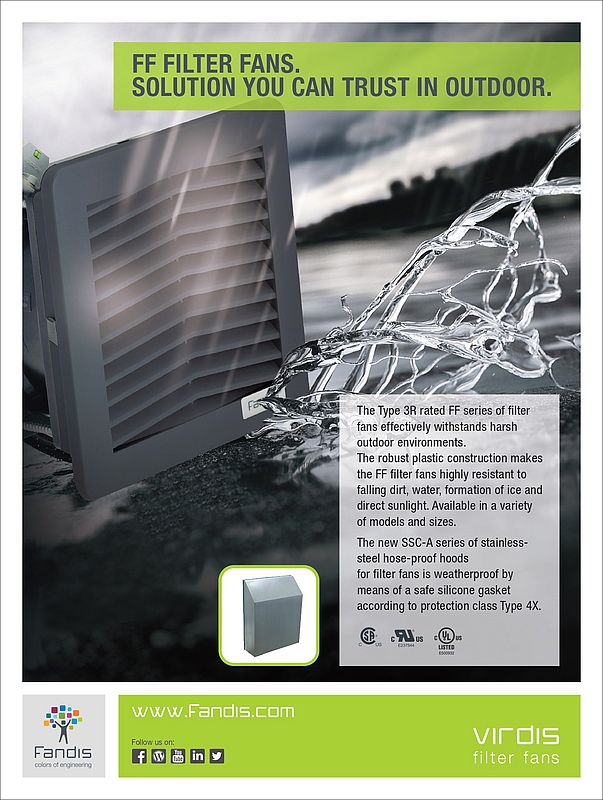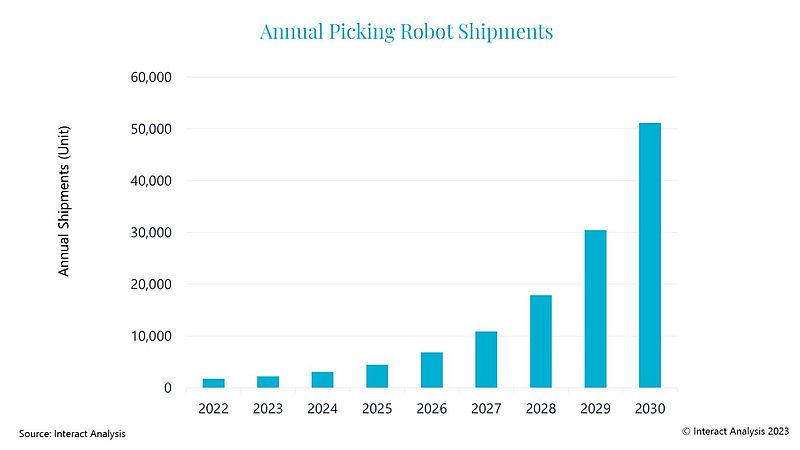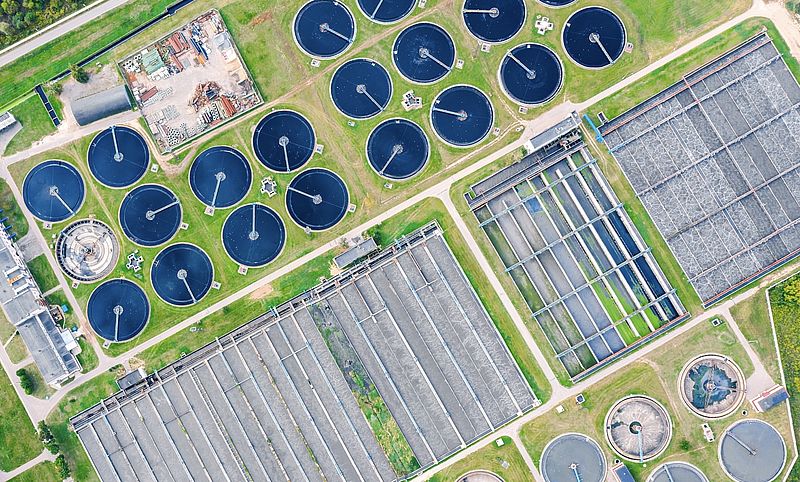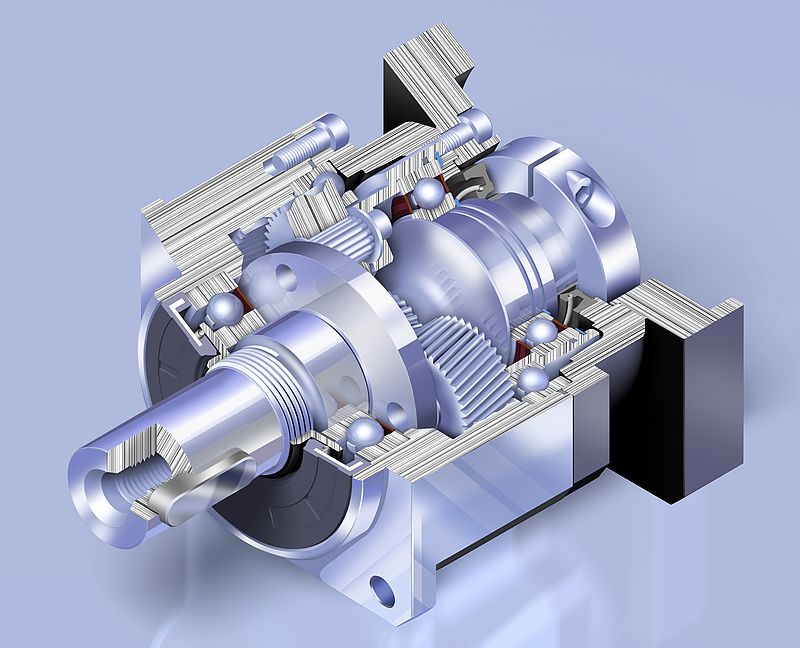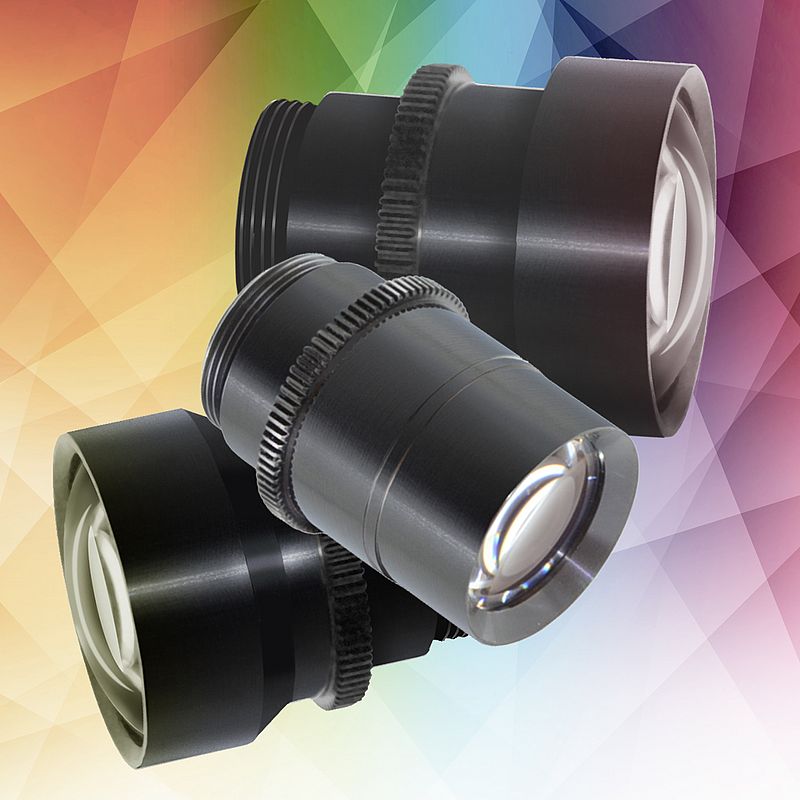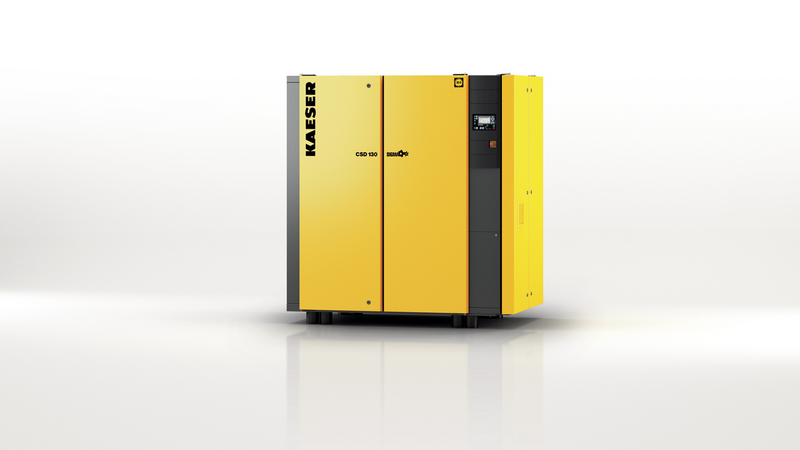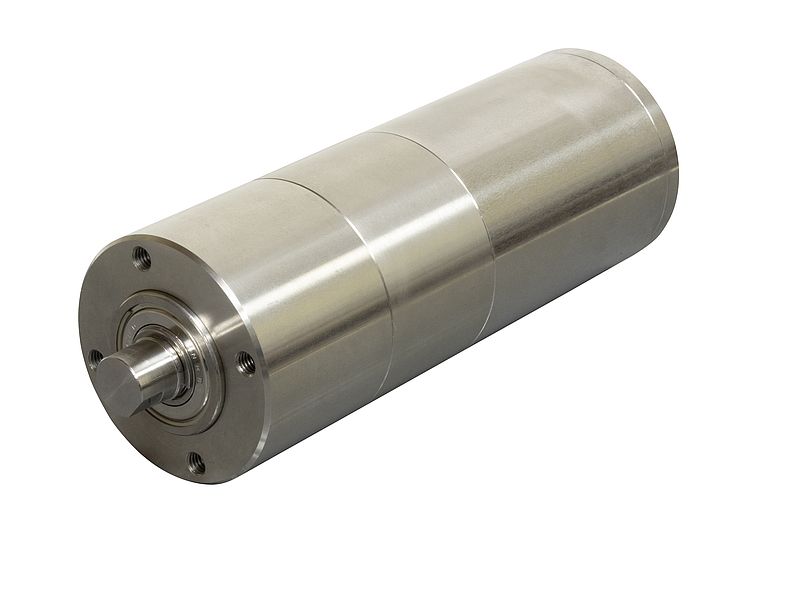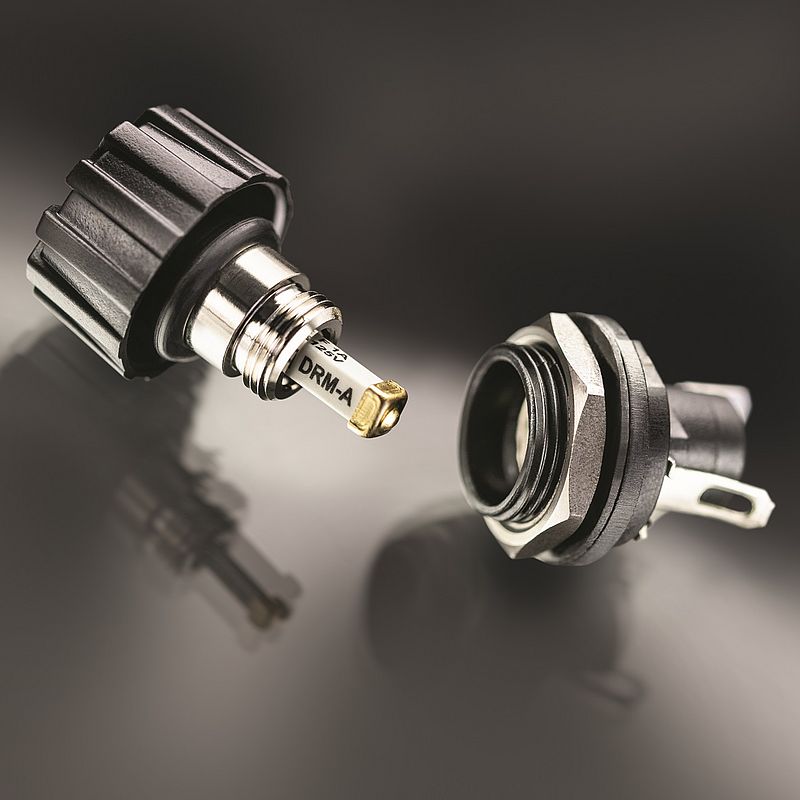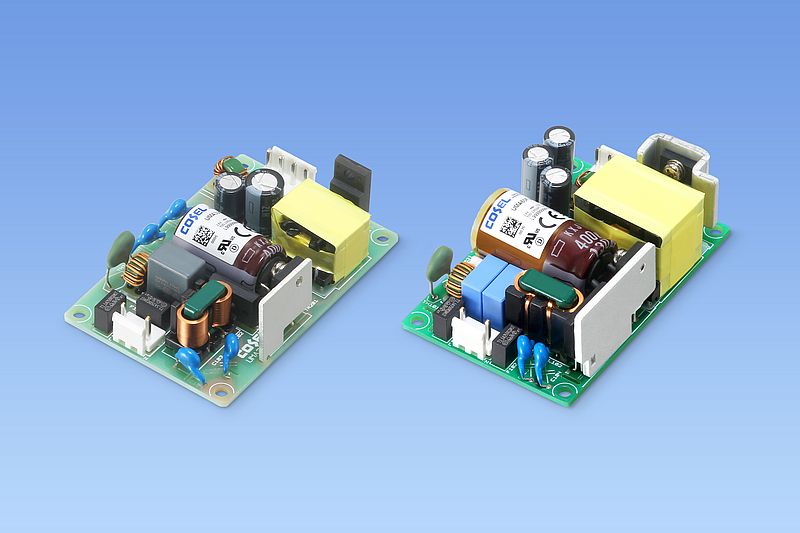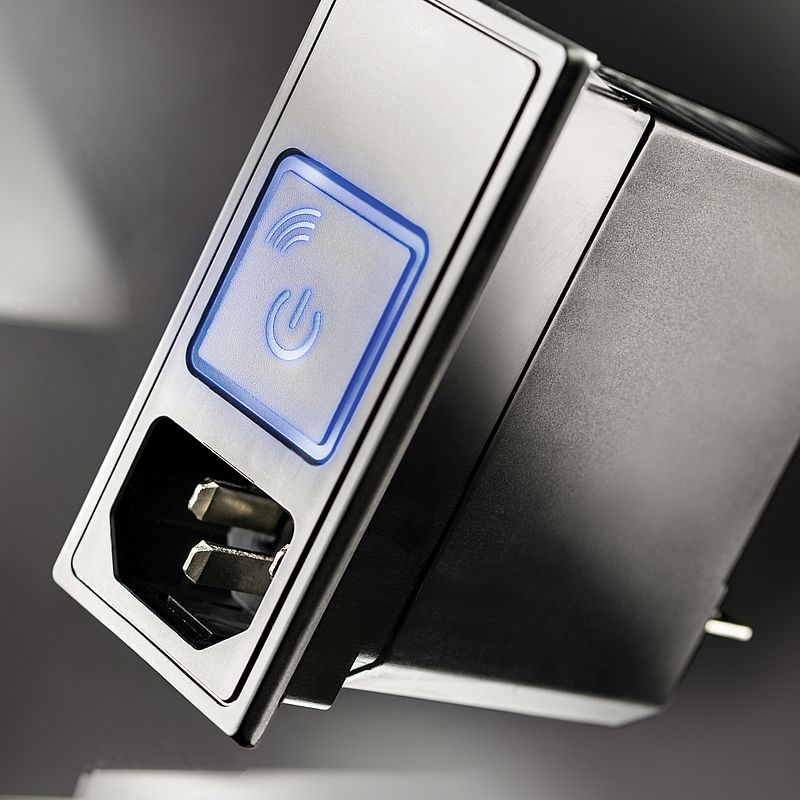Quick access
Hannover Messe 2023: Smart Energy Monitoring & Artificial Intelligence in the Spotlight2 Hannover Messe News3 Hannover Messe News4 Filter Fans5 Report: More Robots to be Installed by 20236 Industry News: Wasterwater7 Application: IoT Platform for Energy Assets Optimization8 Application: Precision Planetary Gearboxes9 Wind Power Bearings & Fixed Focus Lenses10 One Solution for Control & Automation11 Rotary Screw Air Compressors and BDLC Slotted Motors12 Avionics Fuse and Fuseholder, Power Supplies for Medical Applications13 Electronics14 Index15 Contacts16Companies in this issue
Fandis S.p.A.5 SCHURTER AG14 Traco Electronic AG14 Unitronics113 ABB Process Automation7 Apex Dynamics bv9 Cosel Europe GmbH13 Deutsche Messe AG2 ELGi Compressors4 Fandis S.p.A.5 Fukuhara Co Ltd4 Interact Analysis6 Kaeser Kompressoren GmbH12 NKE Austria GmbH10 Noya Bilgisayar Sistemleri Ve Danışmanlık San.Tic.Ltd.Şti.3 Portescap US12 Ptc8 Resolve Optics Ltd10 SCHURTER AG14
HANNOVER MESSE 2023: Electro and Digital Technology, Plus IT, Pave Road to Energy Efficiency
Industry faces the challenge of reducing consumption to counter rising energy prices, reduce its carbon footprint and at the same time, be prepared for various taxonomies dictated by capital providers and/or governments.
Energy Efficiency
Potential energy savings are spawned by the interaction of IT and OT (operational technology). Smart Energy Monitoring from Hannover Messe exhibitor Baumüller, for example, helps users determine and subsequently optimize their carbon footprint. But most industrial users are still barely aware of many concealed consumption cases. Unregulated motors in pumps, fans, compressors or machines are still part of everyday life in many factories. Without control technology and the interaction of OT and IT, energy efficiency improvements are scarcely feasible. Direct current lines (DC), for example, are gaining in importance. The advantage of DC is that frequency converters will become smaller, and the factory will become a “prosumer” – i.e. both a consumer and a supplier of energy. In addition, machines will communicate with the energy supply, or companies will build smart grids within the company – for example, to use employees’ e-cars as intermediate storage units. At the same time, customers are demanding greater system efficiency. A logistics center doesn't always have to run at 100 percent capacity when the machines know that a truck is stuck in a traffic jam. “To solve such tasks, you need domain knowledge. That's what we have as automation companies, and that’s why many tech companies envy us,” explains Christian Wendler of the exhibiting company Lenze. He predicts a decade of automation.
The Energy 4.0 Conference Stages at Hannover Messe are dedicated to precisely these issues, providing an outstanding communication and competence platform for topics of an energy-intelligent, climate-friendly and sustainable future. Here, industry thought leaders, first-rate experts and practitioners will present the latest trends and answer industry’s questions.
Industry consumes around 45 percent of the electricity in Germany, with drive systems accounting for around 70 percent of it
The many European automation companies are certainly also winners of the higher energy prices, because they have the technical answers for many applications – from storage solutions to speed control or DC networks. Energy conservation can only be achieved through the interaction of data, algorithms and physics. In addition, there is the factor of connectivity. Until now, energy data has been left out of the equation for many companies. But companies need to bring production and energy data together. Automation can help to conserve energy, water and CO2. One example is the Schaltbau plant. Both highly automated and with a DC power supply, it is expected to reduce costs by up to 35 percent. According to research conducted by Dr. Mirjana Ristic of Bosch Rexroth within the framework of technology scouting surrounding DC technology and the results of the publicly funded DC-INDUSTRIE project, there is great potential for energy savings in this technology: “Industry consumes around 45 percent of the electricity in Germany, with drive systems accounting for around 70 percent of it. If we start there, we can achieve major efficiency gains,” she explains. Within the German Electro and Digital Industry Association (ZVEI), experts calculate an energy conservation potential of around ten percent, with an estimated cost effect of approximately 20 percent. This is mainly due to savings involving AC to DC converters on motors. Average plant availability can moreover be increased to around 98 percent, according to the experts.
HANNOVER MESSE: Showcase for Artificial Intelligence
The upcoming tradeshow will be offering special guided tours, a dedicated discussion format and numerous company exhibits featuring AI tools and use cases – from robotics to production cells.
Artificial Intelligence
HANNOVER MESSE will be shining a spotlight on the topic of “AI in manufacturing”. Along with the subject of process optimization, exhibitors will be focusing on the role of AI in simulation, testing and product development. Generative AI is also making major inroads into industry.
The only way for industrial enterprises to remain competitive in the coming years is by linking AI to their process automation, warns Prof. Dr. Sepp Hochreiter of the JKU Linz university in Austria. His message to industry: “Don’t screw this one up”. But AI in industry or manufacturing does in fact differ from many other sectors. And this goes beyond the issue of mere data acquisition and processing.
Joint projects to develop AI products and processes for industry
Today, prototypes can often be developed quickly, but the challenge in industrial AI projects – over and above the acquisition and the processing of data – usually lies in integrating the application into a plant, cell, conveyor system or production line. In other words, AI plug and play is rare. HANNOVER MESSE 2023 thus presents the ideal networking hub. This is where AI developers, software engineers get together with users to jointly develop industrial-grade AI products or processes. Whereas in the past, the focus was on use cases in which errors or anomalies were detected or prognostications were made, industry in 2023 is focusing on the optimization of processes and the use of AI methods for simulation, testing and product development.
On the second day of the show, the Monolith AI firm will present its solution for simulation in mechanical engineering as part of the Industrial AI event on the Industrial Transformation Stage in Hall 3. Monolith AI’s approach goes even further than the booming simulation industry. Every simulation performed develops a model, because the creators rely on real-time data. This means mechanical engineering could save on numerous testing procedures. In addition, AI makes suggestions to developers about their products, based on the real-time data. This England-based firm has some very ambitious goals: By 2026, they aim to reduce the product development time of 100,000 engineers by 50 percent. At the same event, machine manufacturer Hawe Hydraulik will report on how it is using reinforcement learning and then implementing the technology in its processes.
Integrating machine learning into processes
Generative AI, for example in the form of the DALL-E tool, will also change the face of industrial product development, with the designer receiving support from an intelligent agent. Festo, the exhibiting company, has been working in the area of reinforcement learning for manufacturing processes for several years. The next step involves the use of generative algorithms for product development. OpenAI recently published 3D models for DALL-E. The challenge in the industry, apart from the 3D challenge, is that the products must also be moveable. In addition to Festo, which is also bringing its new Cobot, Autodesk is also addressing this issue.
The challenge of integrating machine learning into processes is also being addressed by process control suppliers – Siemens is moreover focusing on providing ML Ops, in which engineers provide reliable machine learning models for efficient production and continually maintain them. Siemens will also be providing an insight into an AI project at a customer’s site at the Industrial AI event on the second day of the fair.
In addition, visitors will find AI tools and use cases to draw inspiration on the tradeshow floor. Omron will present a Cell-Line Control System, while Beckhoff will showcase vision solutions and Dürr will feature its DXQanalyze product family. The promise: This enables the comprehensive logging of all available process data to detect potential product quality defects or emerging equipment wear in real time. The system uses data that is condensed at a higher level to draw conclusions about the functionality of individual steps along the value chain, based on documented product quality.
High-Quality Panel PC Manufacturer from Turkey Exhibits at Hannover Messe 2023
A 29-year-old Turkish IPC manufacturer Noya will be exhibiting their latest generation Industrial Panel PCs at Hall 16 Booth E12-6 in Hannover Messe 2023
Electronics & Electricity, Industry 4.0
A 29-year-old Turkish IPC manufacturer Noya will be exhibiting their latest generation Industrial Panel PCs at Hall 16 Booth E12-6 in Hannover Messe 2023.
Noya launched its new EPC Series Panel PCs in March 2019 and thousands of products were already deployed on digital transformation, automation, and Industry 4.0 projects in Turkey’s biggest factories in various sectors until today. Now Noya is seeking new opportunities in the markets abroad with advantages like high quality, competitive prices, low MOQ, short lead times, flexible customization, and geographical location.
New EPC Series Panel PCs have been developed with Noya’s design experience and market feedback from thousands of deployed products since 2004 that released its first Panel PC as Turkey’s first Panel PC manufacturer. Today, EPC Series Panel PC family is offering 10.1”, 15”, 18.5”, 15.6”, and 21.5” display sizes to cover most of the applications on the field which require different data content on displays. In addition, to display options, the EPC series has Intel Celeron J4125 and J6412 embedded processors for entry and mid-level applications as well as Intel’s 8th Generation Mobile Core Processors i3-8145U and i5-8265U for projects which demand high processor performance to provide a wide range of hardware solution to Industry 4.0, IoT, Digital Transformation, and Smart Factory applications.
Besides the above, EPC Series Panel PCs provide enhanced features like below
- High Sensitivity and Durable PCAP Touch Screen with glove support
- Rich I/O for flexibility and functionality
- Stylish and rugged aluminum chassis
- Easy integration with flexible mounting options
- CE tested and certified for reliability and safety.
Today Noya Bilgisayar continues its operations in its 2,000 m2 facilities including offices, warehouse, assembly, test, and technical service departments in the same building located in Istanbul, Turkey.
All these departments carry out their processes on our integrated ERP software platform. Company’s ISO9001:2015 and ISO27001:2013 strengthened infrastructure aiming to ensure all products and services are always delivered to customers with consistent quality.
Hannover Messe 2023: ELGi to Showcase Advanced Compressed Air Solutions
Comprehensive portfolio of oil-free, oil-lubricated compressors and accessories designed to reflect the motto "Efficiency at Our Core"
ELGi Compressors Europe, subsidiary of ELGi Equipments Limited, will present its compressed air innovations at Hannover Messe Compressed Air and Vacuum exhibition in Hannover, Germany, from the 17th to the 21st of April 2023, booth D31 in Hall 4.
“ELGi is back at Hannover Messe to continue reshaping the compressed air landscape," said Chris Ringlstetter, President at ELGi Europe. “In the four years since the last in-person Compressed Air and Vacuum fair, ELGi has expanded and strengthened its footprint across Europe, significantly growing its sales and service organisation in support of an increasingly robust network of channel partners to help build strong partnerships with customers across the region. This exhibition is a reference for our industry in Europe, and we look forward to introducing our visitors to many new offerings that exemplify efficiency, quality, robustness, and the reliability that ELGi is well recognised for.”
A broad portfolio of energy-efficient compressed air solutions
At Hannover Messe, Compressed Air and Vacuum Hall 4, stand D31, ELGi will showcase five products. The ELGi AB Series portfolio of oil-free air compressors offers the highest level of air purity and significant gains in energy efficiency and sustainability, at a low total cost of ownership. The ELGi OF Series of air compressors comprise integrated Heat Recovery Systems for optimal energy reuse in the form of hot water. The units provide Class ‘0’ oil-free air to a broad range of compressed air applications and feature an in-house designed and manufactured oil-free airend. The ELGi EG Series of air compressors with 2-stage compression and new drive motors are aimed to improve efficiency. These electric lubricated screw high-performance air compressors are designed for reliability and ease of maintenance, backed up with an industry-leading warranty of up to 10 years. The ELGi LD Series, lubricated direct drive reciprocating air compressors, is an innovation in piston air compressor technology. Last, ELGi will showcase Data-driven, end-to-end compressed air system audit assessment and remote monitoring tools that enable operators to identify areas of air loss or inefficiencies, resulting in increased system performance, sustainability, reliability, and cost efficiency.
Oil Buster and Energy Saving Screw Compressor
Fukuhara's OIL BUSTER removes the oil contained in the compressed air discharged from a lubricated compressor into Class 0 level
Hydraulics & Pneumatics
“OIL BUSTER” (manufactured by Fukuhara Co.,Ltd. in Japan) is a device that removes the oil contained in the compressed air discharged from a lubricated compressor into Class 0 level (ISO8573-1:2010).
In Hannover Messe, “OIL BUSTER” is going to be exhibited with energy-saving lubricated screw compressor manufactured by SHANGHAI SCREW COMPRESSOR.,LTD(SCR).
This air compressor system can supply high-quality clean compressed air efficiently, which is suitable to various applications that require high-quality compressed air such as food and pharmaceutical usage.
According to Interact Analysis, 150k Picking Robots will be Installed by 2030
Substantial and accelerating growth is predicted for the robotic picking sector over the coming years, as labor costs rise and the cost of robots fall.
Interact Analysis forecasts that there will be just over 150,000 picking robots installed by 2030, with annual shipments jumping from less than 2,000 in 2022 to just above 50,000 by the end of the decade.
However, this is just the beginning and we’re going to see a large increase in adoption over the coming years, which will speed up as the benefits of robotic picking become more apparent. Uptake will be driven by rising wage costs in warehouses, labor shortages, and the rapid development of AI and machine vision technology.
The information in this insight provides a summary of key industry trends and is taken from the Interact Analysis upcoming Robotic Picking Report, which provides an in-depth look at the robotic picking market as a whole.
Falling robot costs, rising wage bills
Over time, the cost of warehouse labour is increasing, while the cost of robotic picking is gradually coming down. Picking tasks in the warehouses are extremely repetitive, and companies across the world have struggled to recruit and retain warehouse operators for several years, driving up the cost of labor. At the same time, we expect the price of robotic picking to come down significantly over the coming years, largely driven by pricing pressures for robotic arms and machine vision software. By 2030, it is expected the average price of picking robots will drop by 40%, while the cost of warehouse labor will increase by approximately 30% over the same period.
Changing roles for warehouse employees
The types of roles carried out within a warehouse are changing over time. Historically, most employees have been very mobile due to the nature of person-to-goods picking. However, the rise of automation is leading to the growth of static manipulation roles within warehouses. Interact Analysis estimates there will be around 7.5 million global full-time equivalent (FTE) employees performing static manipulation tasks by 2030, which is more than double that of 2022. The growth of static manipulation roles is expected to be a large driver for the adoption of robotic picking.
AI technology improvements driving the market
Improvements to AI machine vision technology increase the range of items that can be manipulated by robots and boost the success rate of each pick. it is currently assumed that for every 3-5 robots, there will be a full-time equivalent (FTE) employee supervising them. However, we expect this will increase to one FTE per 7-10 robots by 2030, improving the unit-economics. What’s more, improved AI machine vision and path-planning increases the speed of robotic picking, further improving ROI. For example, we spoke with a representative of one of the leading robotic picking vendors at ProMat 2023, who mentioned the pick-rate of their robotic picking system has increased 17% year-on-year.
Barriers to Entry
There are, however, several barriers which the industry must first overcome. Firstly, the cost of robotic picking is still prohibitively high in many scenarios, particularly for one shift operations. It’s often mentioned that the industrial robots on the market today – which are designed for the automotive industry – are largely over-spec for logistics applications. They include expensive proprietary path-planning motion control software (which is often overwritten by the robotic picking vendors), along with extreme precision capabilities that are not required for warehouse picking operations. As a result, there’s significant demand for cheaper industrial robots that don’t include all the ‘bells and whistles’ found in robots currently on the market.
Furthermore, the programming of robots is still a challenge and requires the expertise of robotic engineers. There are currently 132k robotic engineers in the US and this will need to increase significantly to avoid labor becoming a major bottleneck to market growth. Increasing the labor pool of robotic engineers and reducing the complexity associated with programming industrial robots will be key to widespread adoption.
Looking to the future of robotic picking
Despite more than 150k picking robots expected to be installed by 2030, this represents just 2% of the number of FTEs forecast to be performing static manipulation tasks that year. As discussed, there is a convergence of factors which Interact Analysis believes will lead to widespread growth in the robotic picking segment over the next decade.
Irene Zhang, Senior Analyst at Interact Analysis
An Additional 8.56 billion Cubic Meters of Wastewater a Year Needs to be Treated to Meet UN Water Targets by 2030
Research by ABB to mark World Water Day reveals a need to invest in an additional 469 wastewater treatment facilities annually. Early integration of technology to drive efficiency at plants is key.
Automation, Energy Efficiency
Global wastewater treatment capacity needs to increase annually by 8.56 billion cubic meters and investment in an additional 469 treatment facilities per year is required to meet 2030 United Nations (UN) goals. These are the findings of independent research commissioned by ABB ahead of World Water Day (WWD) on March 22, 2023.
As the UN prepares to report on progress made against its Sustainable Development Goals (SDG), ABB’s research focuses on SDG 6.3 which aims to improve water quality by halving the proportion of untreated wastewater globally, increasing recycling, and minimizing the release of hazardous materials. The UN says 2.2 billion people lack access to safely managed drinking water, while more than 4.2 billion people lack safely managed sanitation.
Wastewater treatment targets need to be achieved in the most energy and resource efficient way possible
However, treating wastewater is energy intensive, with the industry consuming up to three percent of the world’s total energy output and contributing to over 1.5 percent of global greenhouse gas emissions.
“This research proves more needs to be done to help support the UN goals and accelerate progress in tackling water scarcity,” said Brandon Spencer, President of ABB Energy Industries. “But we need to ensure we are achieving these wastewater treatment targets in the most energy and resource efficient way possible to make it sustainable. This is where technology is key.”
While increasing wastewater treatment capacity is a priority, the early integration of technology to drive efficiency at plants is also vital. ABB’s automation, electrification and digital solutions are helping monitor, analyze and manage wastewater plant operations. In association with crucial measurement and control solutions, which collect and transmit a wealth of operational and diagnostic data, ABB systems help optimize resource efficiency and reduce energy consumption.
Development Economics, which has over 20 years’ research experience, utilized the same data employed by the UN to assess what real-term measures are needed. Based on modelling using a 50-million-liter daily capacity wastewater treatment plant as the benchmark, a further 469 treatment facilities – the volume equivalent of 3.4 million Olympic swimming pools – is required each year.
Reducing carbon emissions and gaining savings with automation and digital solutions
The scale of the challenge linked to UN SDG 6.3 is highlighted in a report from 2021 assessing the volumes of wastewater collected, treated, and reused. The research, which is used by the UN, concludes that 48 percent or 171.3 billion cubic meters of wastewater is uncollected or untreated annually. To meet SDG 6.3 – which targets halving the proportion of untreated wastewater by 2030 – these figures need to be reduced to 24 percent and 85.65 billion cubic meters.
In 2022, ABB’s Energy Transition Equation report analyzed how better use of wastewater could relieve pressure on water supplies through greater integration of automation and digital technologies:
It appeared that wastewater sites can reduce carbon emissions by up to 2,000 tons per annum. Moreover, with over 50,000 plants worldwide, 100 million tons of CO2 could be saved each year. Last, by applying a package of automation and digital solutions, water companies can reduce carbon emissions as well as deliver annual operational savings of up to $1.2 million per plant.
ENGIE’s CRIGEN Lab Focuses on the Operational Performance of Energy Assets with a View to Decarbonizing Industry
In the current energy transition, the challenges of managing industrial assets also include operational excellence. ENGIE used PTC's platform to reach and deliver usable information.
Automation, Energy Efficiency, Industry 4.0
By creating a digital twin for 3D multiphysics simulation of an industrial furnace that is connected in real time to the IoT ThingWorx platform by PTC and combined with a mixed reality solution, the French energy company ENGIE’s CRIGEN Lab has sought to optimize the operation of an industrial asset on its conversion to hydrogen.
Putting to use the digital twin of an industrial furnace
Since 2020, ENGIE’s CRIGEN Lab is located in Stains (northern suburbs). The lab devotes part of its work to anticipating and supporting industrial developments in ENGIE by gaining a deeper understanding of cutting-edge technologies and enhanced operation of energy assets. Specialized in new energy sources as their uses and their impacts, this laboratory conducts research projects on energy resources linked to gas and runs innovative projects to boost and speed up the energy transition.
In order to reach carbon neutrality, industrial assets must adapt to the different energy sources while maintaining performance and efficiency. Based on the notion that an industrial furnace could provide a first-rate experimental basis for digitally reproducing the hydrogen conversion of industrial facilities whose core process is combustion, the CRIGEN Lab took the decision to study its real-time physical and dynamic behaviours through 3D multiphysics digital simulation.
A data hub based on PTC’s IoT platform, for delivering usable information
ENGIE’s CRIGEN Lab has created a network of specialist partners who pooled their know-how and in-field experience to successfully complete the project. Then, ANSYS created a simulation digital twin that generated millions of data in real time. PTC managed these data and delivered the real-time connection with the industrial facility; and SYNERGIZ made immersive and realistic use of this data with Microsoft HoloLens mixed reality headsets.
Collecting and centralizing data of different types from multiple sources, and standardising and making full use of this data called for a platform that was capable of supporting many industrial communication protocols. The ThingWorx solution was fully able to meet IoT connectivity requirements. Preference was given to the hybrid cloud so as to ensure full control of the system and greater agility in data recovery. The onsite installation and deployment of ThingWorx was straightforward, and the platform allowed ENGIE’s CRIGEN Lab to retain internal control.
Exciting results
The ambition of this project lies first and foremost in its ability to embed a technology in order to demonstrate the relevance of IT/OT convergence and its benefits for those working in the field (operators, maintenance personnel, etc.). This goal was a success.
Everything is ready, the value chain is operating, and the collection of digital twin data through 3D simulation is meeting expectations. The user in the field donning the Microsoft HoloLens headset now has access to real-time information from the digital twin.
What has been done for a furnace can also be done for other energy assets. Thus, ENGIE’s CRIGEN Lab is right on target in its role of thinking ahead and delivering proposals. “This is the very heart of our technological innovation mission and, in the present context, it is a huge plus to be able to chart the path ahead for revised energy consumption, thanks to the enhanced management of industrial assets”, explains Guy-Alexandre Grandin, the laboratory Deputy Manager.
Gearboxes for High Precision and Low Backlash
Electron was retrofitting a grinding machine to turn it into an accurate grinder by installing servo systems instead of hydraulics. The company turned to Apex Dynamics and its range of precision planetary gearboxes.
Industrial Equipment & Supplies
Founded in 1985, Electron Engineering Services is a machine tool company specializing in machine refurbishment and CNC retrofitting, including re-engineering, re-manufacture and retrofit. It has customers across the UK, Europe and the U.S., and has worked with top industry names, including Butler, Schiess, Asquith, Heidenhain, Noble & Lund, Skoda, DSG and Boehringer. The company was retrofitting a grinding machine to turn it into an accurate grinder by installing servo systems instead of hydraulics. They turned to Apex Dynamics and its range of precision planetary gearboxes for high precision and high torque, selecting the AB115 and the PAII115 gearboxes for the job.
The Challenge
As part of the project, Electron determined that it needed a precision planetary gearbox fitted to the servo in order to get more accurate performance from the grinding machine and higher torque from a smaller motor.
Good availability of parts was essential for timely delivery of the final machine design as Electron had previously encountered problems with other components as a result of supply chain shortages. Other key considerations included high levels of customer support, availability of 3D models for design, and assistance with calculations, in order to meet the project deadlines.
The Solution
To meet Electron’s needs, Apex Dynamics designed a solution that comprised the AB115 and PAII115 gearboxes. The AB115 is part of Apex Dynamics’ highest precision, highest torque range and is specifically designed for accuracy, while the compact, lightweight PAII115 is an economy precision planetary gearbox, with accuracy of less than 6 arc minutes and reduced backlash. The combination of the two precision planetary gearboxes provided the ideal solution for the Electron project.
The Benefits
By installing in-line planetary gearboxes on servo axes, Electron was able to use a much smaller motor in the grinding machine to get similar torque and thrust, with lower backlash and quieter operation. Collaboration between engineers from both Electron and Apex Dynamics allowed Electron to keep on track with the project plan. Working with Apex Dynamics resulted in a more accurate grinding machine, with the high-precision servo planetary gearboxes contributing low backlash and high precision to the machine tool axes.
Purchasing products directly from Apex Dynamics, Electron was impressed with the responsiveness of the company to queries and its fast delivery times for products. Build-to-stock manufacturing means Apex Dynamics products are always in stock, and the company makes sure they get to customers on time, with an impressive 2-3 week lead time, guaranteed delivery and excellent documentation.
By utilizing Apex Dynamics’ high precision, compact gearboxes, Electron was able to use smaller motors in the grinding machine, saving costs and improving performance. Electron found the Apex Dynamics gearboxes easy to incorporate into its design, with support from customer services in the form of 3D models and assistance with calculations. In addition, the selected gearboxes were simple to implement and fit, and Electron has been impressed with the reliability of Apex Dynamics products.
Phillip Denison, Senior Mechanical Designer at Electron Engineering Services, comments: “We have a very experienced team of machine tool guys and this was a big job, involving a complete system redesign. Having used Apex Dynamics products for some time now, they are really good at what they do and they understand what we do, helping when needed with things like calculations and 3D models. We are now at the point where if we need a gearbox we’re on the phone to Apex and they are part of our considerations when we face design challenges. The fast delivery times are really important to us. We have 6, 8, 10 months to turn a machine around, so we can’t wait long for the delivery of a gearbox. Apex have it well under control. We were really pleased with the levels of service for this project, as we got good products, at a good price, with good customer support and good delivery!”
Bearings for Wind Power
Among other advantages, NKE's black oxide finished bearings offer improved run-in and wear and enhanced adhesive wear characteristics.
Industrial Equipment & Supplies
At this year’s Hannover Messe, NKE Austria GmbH will present bearings for wind turbine gearboxes and generators. The Austrian bearing manufacturer has more than 20 years of experience in the wind energy sector. NKE bearings have been installed in more than 4,000 wind turbines across Europe, the USA and China, equivalent to more than 10,000 MW of installed power.
"NKE bearings are used in the most important wind turbine components, that is gearboxes and generators, or as main bearings. We have final product approvals with major wind turbine manufacturers and are in the final stages of the approval process with others,” says Matthias Ortner, Managing Director of NKE in Steyr. "The strategic focus on sustainable technologies such as wind power and rail vehicles that was introduced three years ago is now bearing fruit. NKE is gaining a reputation as an innovative supplier of bearings for wind power.”
For example, NKE bearings are present in all bearing applications of the Envision gearbox: from the carrier (rotor side, generator side) to the high-speed shaft, including the intermediate shaft and planetary gearbox shafts. “For high-speed shafts, NKE cooperates with the customer’s engineering team to design bearings with enhanced profile and contact pressure,” says Michael Rössl of NKE’s Application Engineering department. “Another example are our new bearings with Power-Density technology: they are only 20 percent larger than conventional bearings, but they generate twice as much energy to optimize the output of the wind turbines and extract as much energy as possible from the air stream.”
At the company headquarters in Steyr, Austria, NKE has established a competence centre for large bearings, including the most advanced production facilities and a logistics centre. All NKE bearings undergo strict, documented quality control procedures. Besides comprehensive technical consulting services, NKE’s Application Engineering department offers support for obtaining certification to wind standards such as GL2010, IEC61400 or individual customer specifications.
Besides bearings for wind power, NKE produces standard and special bearings for all industrial applications. Engineering, product development, production and final processing of components, assembly, quality assurance, logistics, and sales and marketing are centralized at its Steyr headquarters. In addition to product development and application engineering, NKE provides a full range of technical services, consulting, documentation and training.
NKE at Hannover Messe 2023:
17 to 21 April 2023, Hannover, Germany, Hall 5 Booth B05
Monitoring Radioactive Processes with Fixed Focus Lenses
For monitoring radioactive processes in nuclear power, reprocessing and waste storage plants – Resolve Optics offers a standard range of 6mm, 9mm and 25mm focal length fixed focus lenses.
Vision & Identification
Designed to provide a focal length of 6mm or 9mm respectively, the Model 214 and 286 radiation tolerant lenses offer high quality images with minimal geometric distortion from 400-750nm. Designed for close-up monitoring of radioactive processes, these durable lenses are specifically designed for use with 2/3-inch image format radiation resistant tube and CMOS cameras. Key features of the Model 214 and Model 286 lenses include their wide field-of-view and variable iris control.
A rapid design service to produce a custom fixed focus lens fully optimised
However, producing clear, sharp images free of a strong yellow tint has traditionally been a limiting issue when using radiation tolerant lenses on colour CMOS cameras. To provide a solution for this problem, Resolve Optics developed the Model 313 - a 25mm focal length fixed focus lens. Using specially selected cerium doped glasses with the least amount of yellow tint, the Model 313 offers high clarity, natural colour images.
Rotary screw compressors are the dependable backbone of an industrial compressed air supply. With a multitude of features, the innovative CSD/CSDX range from Kaeser Kompressoren fulfils this role more efficiently, dependably and economically, whilst at the same time reducing CO² footprint.
CSD and CSDX both available with variable speed control
The most important highlight of these compressors is their low energy consumption, which has been achieved via a number of innovative measures. The CSD/CSDX model series has drives of the best possible efficiency class, whether speed-controlled (IE5) or fixed-speed (IE4). The centrepiece of all compressors in this series is the rotary screw airend with flow-optimised “Sigma Profile” rotors, specially developed for this performance range. These and numerous other improvements, such as speed-controlled fan motors, have enabled the energy efficiency of the compressor system to be enhanced, which has significantly reduced energy consumption, resulting in reduced energy costs and an improved CO² footprint. What’s more, the new design has led to improved accessibility to all relevant components and therefore increased maintenance-friendliness.
Featuring motors with power from 45 to 110 kW, models from this series can cover delivery volumes from 8.4 to 19.4 m³/min and are designed for pressures up to 15 bar. Particularly at low pressures, even higher delivery volumes can be achieved.
Designed for optimised cost-efficiency, operational reliability and maintenance-friendliness
The environmentally friendly system design also extends to the fluid filter elements: they are metal-free and after use can simply be thermally disposed of without need of further treatment.
In addition to the standard versions, versions with an add-on refrigeration dryer module are available, which permit both compressed air generation and drying in a comparatively small space. The refrigeration dryer is dimensioned for high ambient temperatures and operates with very little pressure loss. In comparison to the previous version, energy consumption has been reduced significantly, whilst the required refrigerant charge is also around 25 percent lower. The dryer is accommodated in a separate housing and is therefore not negatively influenced thermally by the exhaust air from the compressor.
Enhanced Autoclavability for Surgical Applications with BDLC Slotted Motors
Portescap Adds Two New Frame Sizes to Surgical Motor Solutions Portfolio
Motors & Drives
Portescap introduces the B2010A4 and B0810A1 brushless DC slotted motors as its two newest additions to their Surgical Motor Solutions portfolio. Leveraging Portescap’s expertise in developing sterilizable solutions for surgical hand tool applications, these motors are designed to withstand more than 1,000 autoclave and medical device dishwasher cycles. This is possible due to the improved encapsulation of the windings, which enhances the motors’ autoclavability.
The B2010A4 (Size 20) bone mill surgical gearmotor features a 50mm diameter, which is unique as such a sterilizable motor in such a large frame size. The motor’s 6 poles and full metal gearhead allows it to achieve a high peak torque of 15Nm while simultaneously providing a continuous, slow rotation for bone mill and bone crusher devices.
Design flexibility in the surgical application space
With a 20mm frame size, the B0810A1 (Size 8) multi-tools surgical motor fills the gap between Portescap’s existing Size 6 and Size 9 SMS motors, making it an ideal choice for device miniaturization. The 4-pole design enables the Size 8 to provide 20% more torque than competitive solutions within the same package size, and its lightweight mass of 110 grams facilitates longer working times for surgical hand tools and decreased surgeon fatigue.
Both the B2010A4 and B0810A1 provide much-needed design flexibility for those within the surgical application space. As its name would suggest, the Size 20 is an ideal choice for bone mill surgical devices, while the Size 8 excels in liposuction, skin grafting, and small bone drill applications.
Minimized dimensions and low weight of Avionics components, their reliability and efficient maintainability are elementary requirements to keep operating costs low. The pressure to reduce the carbon footprint and operate sustainable aircraft fleets is driving the industry. SCHURTER addresses this need with the most compact and robust Avionics qualified fuse holder on the market, the FRM-A, and the matching SMT fuse DRM-A with a fast-tripping characteristic.
FRM-A: ultra-compact and powerful
It is particularly the modest dimensions that make the SCHURTER FRM-A closed fuse holder a great one. Not only is it the most compact in its class, but it also shines with its great robustness and IP67 protection. Successful vibration, shock and salt mist tests validated this and made a great impression. The FRM-A has been developed exclusively for the SMT ceramic fuse DRM-A.
DRM-A: using gold against whisker
Tin whiskers represent a risk for short circuits in electronics. The underlying physical process has not yet been fully identified. However, the problem has always been circumvented by adding lead. But lead is often an undesirable element (RoHS guidelines). The DRM-A therefore completely dispenses with a lead-containing coating and relies on gold in its place. Gold-plated end caps offer no surface for whiskers to attack. The DRM-A, which was developed specifically for Avionics applications, is suitable wherever the highest demands are made on reliability and robustness. But this does not necessarily have to be at an altitude of 50,000 feet and installed in the FRM-A. Thanks to its design, it is also ideally suited for industrial and telecom applications.
Compact 2”x3” Power Supply Series for Demanding Medical Applications
Universal input range of 85 to 264VAC
Electronics & Electricity
COSEL Co, Ltd announced the expansion of its medical power offering with the addition of the new UMA series, the first two models being the 30W UMA30F and the 60W UMA60F. Both models feature a universal input range of 85 to 264VAC and comply with international safety standards. Designed for demanding medical applications, the UMA series is suitable for Body Floating (BF) applications and complies with 2MOPP (IN/OUT) and 1MOPP (OUT/FG) safety requirement.
Suitable for Body Floating (BF) application
Based on a robust platform, the units’ design has been optimized to offer a very good price/performance ratio for medical applications requiring a high quality power solution. The UMA series is available in up to five output voltages of 5, 12, 15, 24, and 48VDC. The UMA series Complies with EN 60335 safety standard.
Internal Smart Connector and External Smart Connector
SCHURTER presents its first devices of the new Smart Products range. Conventional electronic devices can be easily converted into intelligent devices. Both connectors are part of the new Smart Ecosystem from SCHURTER.
Electronics & Electricity
With the internal Smart Connector DS11, SCHURTER is launching a world's first: an intelligent connector that can be installed as a power entry module in electronic devices and systems. Equipment and device manufacturers can thus offer their customers extensive additional functions in no time - without any costly development and engineering work.
In addition, the new DT31 is an external plug-and-play and retrofit smart connector. The advantage of this connector variant is that it can be connected to an existing device quickly and without installation. As users can link existing devices quickly and inexpensively with the pluggable DT31, it is ideal for monitoring the use and consumption of existing devices. In hospitals for example, technical staff can use the Smart Connector DT31 to precisely monitor the operating hours of existing medical devices and thus determine, how often the devices are in use.
Both connectors of the new SCHURTER Smart Products range have a WLAN connection. The internal DS11 also has a serial interface for direct connection to the host device. Both Smart Connectors are IEC-60320 compatible.
The Smart Ecosystem from SCHURTER
The intelligent Smart Connectors are not just electronic components, but part of a comprehensive, cloud-based software system. Users can access their Smart Products via the new Smart Ecosystem from SCHURTER. The cloud services are free of charge and are included in the scope of delivery for both the DS11 and the DT31. Depending on customer requirements, SCHURTER also offers four additional software packages with extended functions. Both Smart Connectors can be accessed via the Smart Connector App.
Applications
Both new Smart Connectors are convincing not only because they are easy to install, but also because of their versatile functions. For example, the Smart Products can be used to monitor the energy consumption of electronic devices and equipment. The planning of preventive maintenance intervals and the fleet management of electrical devices also become more efficient and easier with the intelligent new Smart Products. Both the DS11 and the DT31 are suitable for monitoring and visualizing processes. The possibilities are almost unlimited.
150W & 200W DC/DC Converters
Come with a 12:1 ultra-wide input voltage range
Electronics & Electricity
The TEP 150UIR and TEP 200UIR from Traco are series of railway-certified DC/DC converters designed for highest reliability in the most demanding applications. Their ultra-wide 12:1 input voltage ranges allow the application engineer to target an array of nominal system voltages with a single design. Thanks to their dedicated holdup capacitor connections, the TEP 150UIR and TEP 200UIR meet extended holdup-time requirements without the need for bulky input capacitors.
Ultra-wide 12:1 input voltage range: 14–160 VDC
The TEP 150UIR and TEP 200UIR series are EN 50155 certified for applications on rolling stock. Additional certifications include EN 61373 for mechanical shock and vibration, EN 45545-2 for fire behavior and IEC/EN/UL 62368-1 for IT and general-purpose industrial applications. Fully encapsulated, they operate in temperatures from –40°C to +105°C.
A
ABB Process Automation 7 Apex Dynamics bv 9C
Cosel Europe GmbH 13D
Deutsche Messe AG 2E
ELGi Compressors 4F
Fukuhara Co Ltd 4I
Interact Analysis 6K
Kaeser Kompressoren GmbH 12N
NKE Austria GmbH 10 Noya Bilgisayar Sistemleri Ve Danışmanlık San.Tic.Ltd.Şti. 3P
Portescap US 12 Ptc 8R
Resolve Optics Ltd 10S
T
U
TIMGlobal Media BV
Rue de Stalle 140 - 3ième étage - 1180 Uccle - Belgium
o.erenberk@tim-europe.com - www.ien.eu
- Editorial Director:Orhan Erenberko.erenberk@tim-europe.com
- Editor:Kay Petermannk.Petermann@tim-europe.com
- Editorial Support / Energy Efficiency:Flavio Steinbachf.steinbach@tim-europe.com
- Associate Publisher:Marco Marangonim.marangoni@tim-europe.com
- Production & Order Administration:Francesca Lorinif.lorini@tim-europe.com
- Website & Newsletter:Marco Prinarim.prinari@tim-europe.com
- Marketing Manager:Marco Prinarim.prinari@tim-europe.com
- President:Orhan Erenberko.erenberk@tim-europe.com
Advertising Sales
Tel: +41 41 850 44 24
Tel: +32-(0)11-224397
Fax: +32-(0)11-224397
Tel: +33 1 842 00 300
Tel: +49-(0)9771-1779007
Tel: +39-02-7030 0088
Turkey
Tel: +90 (0) 212 366 02 76
Tel: +44 (0)79 70 61 29 95
John Murphy
Tel: +1 616 682 4790
Fax: +1 616 682 4791
Incom Co. Ltd
Tel: +81-(0)3-3260-7871
Fax: +81-(0)3-3260-7833
Tel: +39(0)2-7030631
